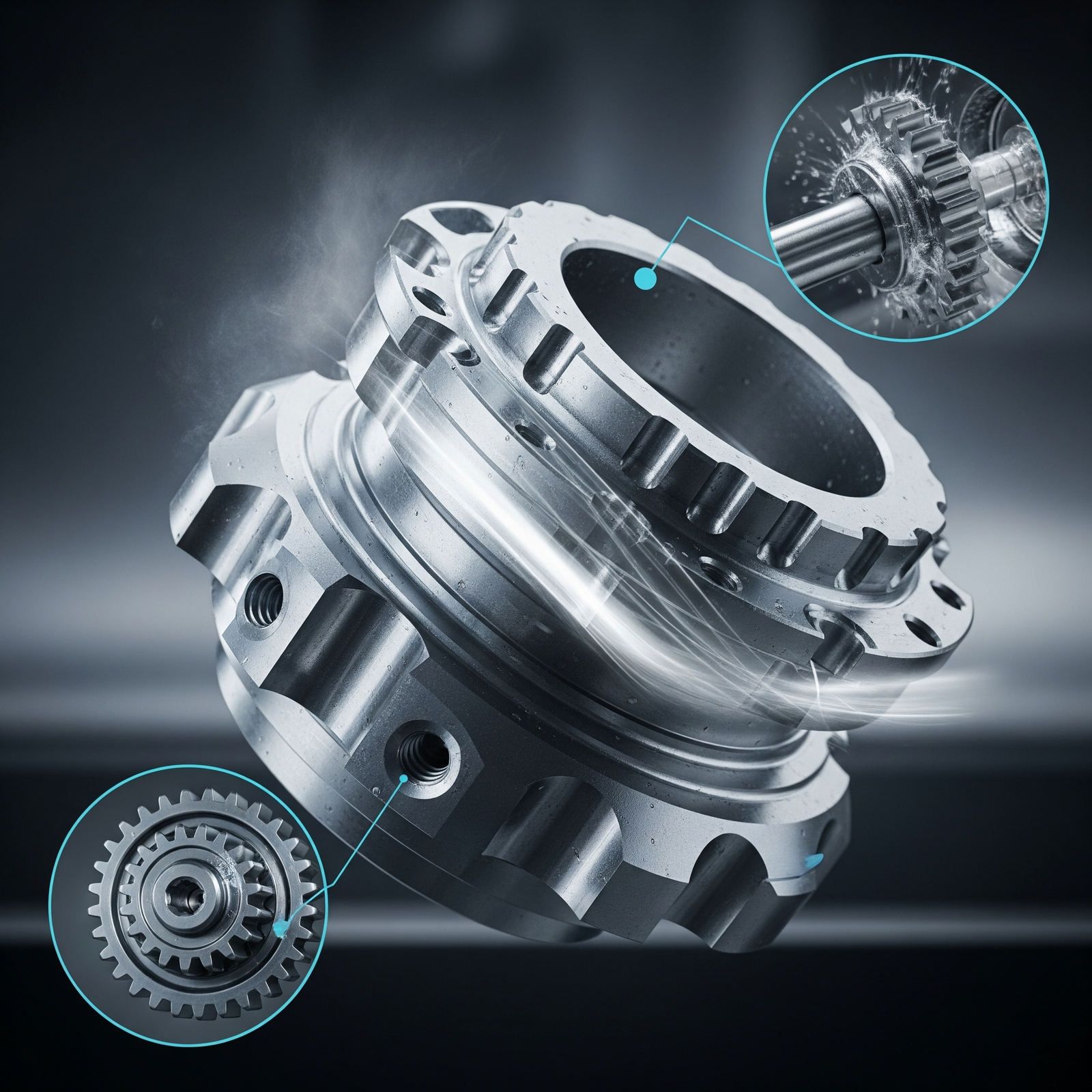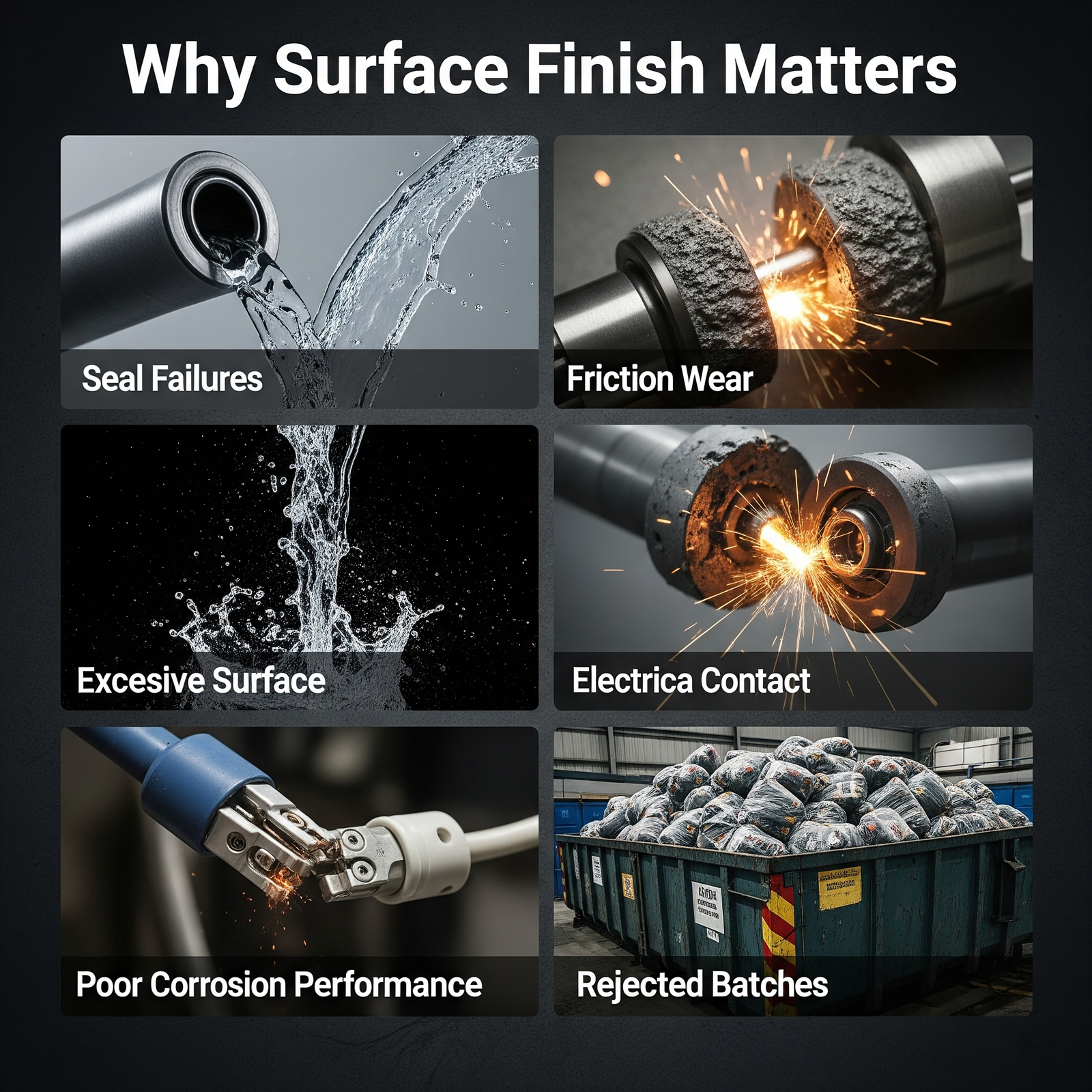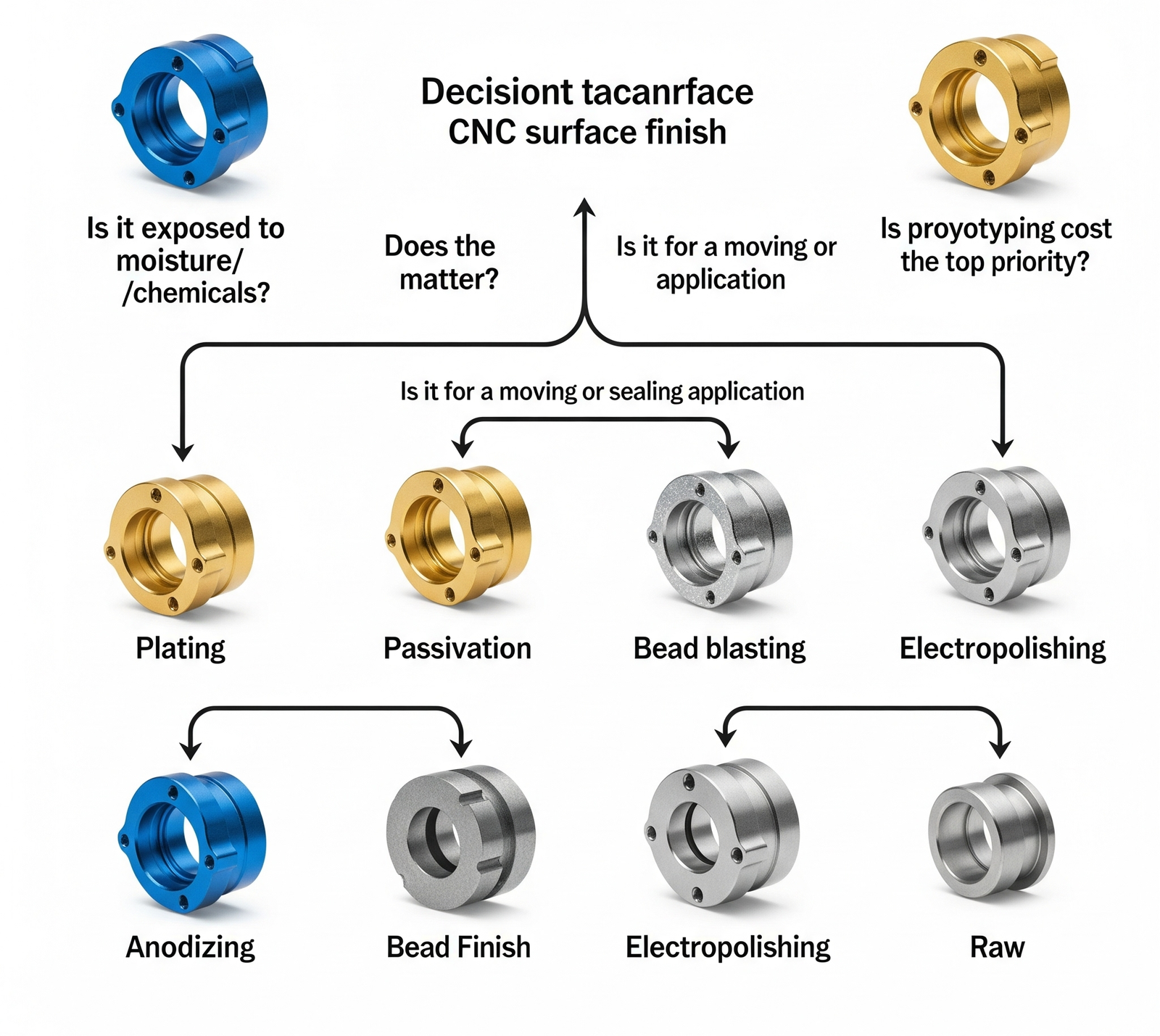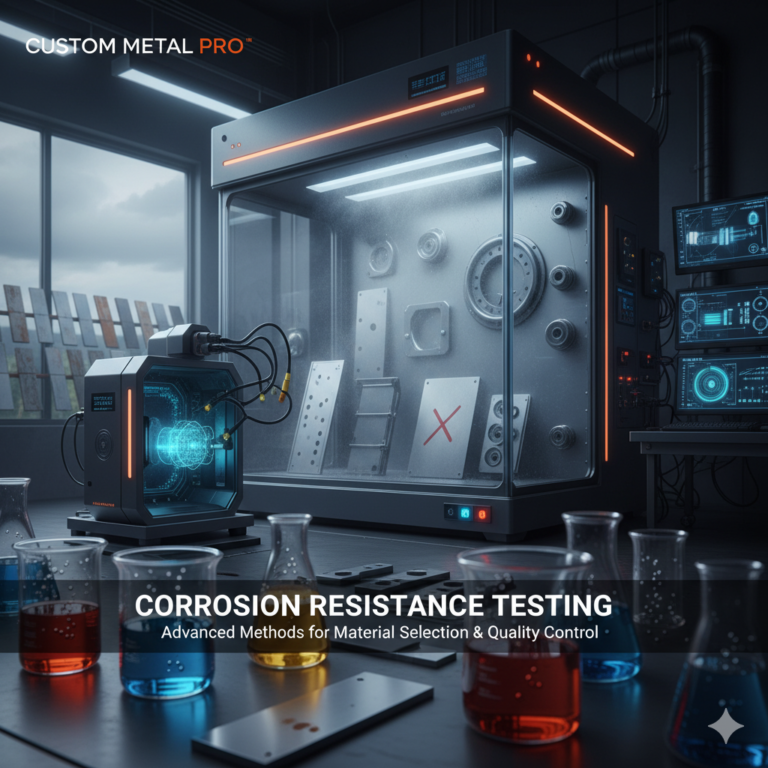
Precision is useless if the part corrodes or fails due to the wrong finish.
When you’re working with tight tolerances and demanding applications, choosing the right surface finish1 becomes mission-critical.
So, what’s the best surface finish for high-precision CNC components2?
It depends on your part’s function, environment, and tolerance requirements. This guide helps you choose wisely.
Why Surface Finish Matters in CNC Machining

A surface finish does more than look good—it protects the function.
Poorly finished parts can cause:
- Seal failures
- Friction wear
- Electrical contact issues
- Poor corrosion performance
- Rejected batches from customers
If you care about fit, performance, or durability, you should care about finishing too.
Comparison of CNC Surface Finishes
| Finish Type | Roughness (Ra μm) | Function or Visual? | High-Precision Ready? | Common Uses |
|---|---|---|---|---|
| As-machined | 1.6–3.2 | Functional | ⚠️ Medium (tolerances only) | Prototypes, internal parts |
| Bead blasting | 3.2–6.3 | Visual | ❌ No | Consumer products, matte surfaces |
| Anodizing (Type II) | 0.8–1.6 | Both | ✅ Yes (with prep) | Electronics, aluminum enclosures |
| Electropolishing | 0.1–0.8 | Functional | ✅ Excellent | Medical, lab, food-grade components |
| Passivation | N/A | Functional (invisible) | ✅ Yes | Stainless steel corrosion protection |
| Plating (Nickel, Gold) | 0.2–0.8 | Both | ✅ Yes | Electronics, aerospace |
How to Choose the Right Finish?

Ask yourself:
- Will the part be in contact with moisture or chemicals? → Go for anodizing3, plating, or passivation4
- Does it need to look great or match other components? → Use bead blasting + anodizing3
- Will it move or seal against other surfaces? → Pick low-Ra finishes like electropolishing5
- Is cost your top priority for prototyping? → As-machined might be good enough
🔍 Quick Tip
Stainless steel doesn’t always mean rust-proof.
In high-humidity or salt spray conditions, even 304/316 can pit without treatment.
➡️ Passivation or electropolishing gives it real-world resistance.
✅ Why Engineers Trust Us with Surface Finishing
- 15+ years helping teams in medical, aerospace, robotics, and EV industries
- In-house finishing capabilities or qualified partners
- We test finishes in real-world environments, not just theory
- Get roughness reports (Ra)6 when needed
📩 Need Help Selecting the Right Finish?
Not sure which finish will perform best in your application?
Send us your part drawing—we’ll analyze the material, function, and finish options, then recommend what fits.
You’ll get:
- ✅ Finish suggestions based on performance & cost
- ✅ Ra surface roughness recommendations
- ✅ Lead time and unit pricing by batch size
👉 Contact Us for Free Finishing Advice
-
Understanding surface finish is crucial for ensuring the durability and performance of CNC components. ↩
-
Exploring best practices can help you achieve optimal performance and longevity for your CNC machined parts. ↩
-
Anodizing not only improves corrosion resistance but also enhances the aesthetic appeal of aluminum parts. ↩ ↩
-
Passivation is key for protecting stainless steel from corrosion, especially in harsh environments. ↩
-
Electropolishing enhances the surface quality and corrosion resistance of components, making it essential for high-precision applications. ↩
-
Roughness reports provide critical data for ensuring that parts meet specific tolerance and performance standards. ↩


